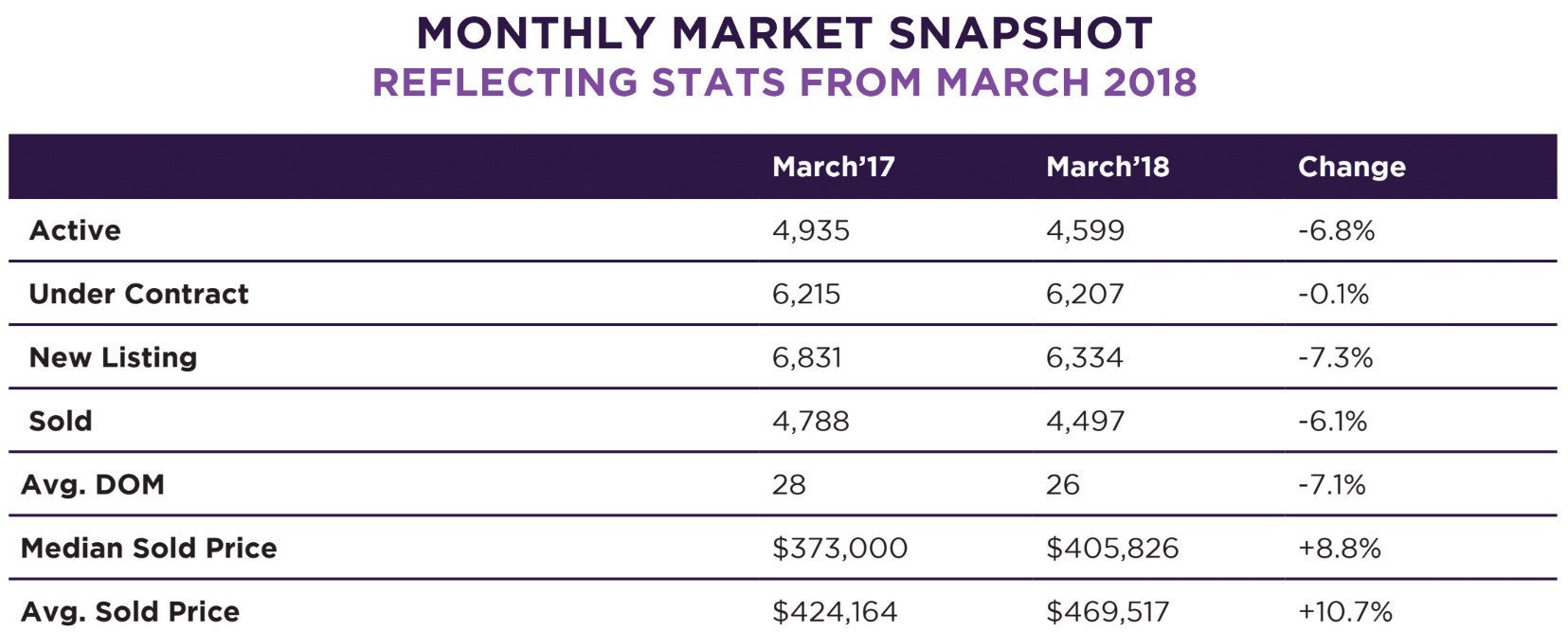
How’s the real estate market?
There are lots of different factors and metrics I can discuss when assessing our market, here are just a few:
- Rising home prices
- Overwhelming consumer demand for homes
- A lack of inventory for sale
- New construction not keeping up with demand for housing
- Musings from the Whitehouse
- Rental prices skyrocketing
- The effect gas and oil prices have on housing
- How low interest rates are continuing to make housing relatively affordable
- What parts of town have appreciated more than others over time
- Blockchain and all things indecipherable
- And on and on and on…
But the thing I like to do most when explaining our real estate market is to show folks the chart below. Truly, a picture is worth a thousand words. Please take a look at it and begin to absorb what it’s telling us. Everything you need to know about our current real estate market is contained in this chart.

What you see are two lines, a solid one, and a dotted one. The solid line shows the inventory (i.e., the number) of homes for sale in metro Denver every month from January 2008 to January 2018. The dotted line shows the number of homes sold every month. You can see that the inventory peaked in July 2008 above 25,000 homes for sale. That was at the depth of our economic and housing downturn, when fear ruled our market, banks were being shut down, our local and national economies were in shambles, unemployment was rising, and consumer confidence plummeted. The result, of course, was that people didn’t want to buy homes; they were afraid of the future and didn’t want to take on any risk. On the seller side of the equation, many homeowners were getting caught with rising monthly mortgage payments as their Option ARM mortgages adjusted upward, so suddenly they wanted to sell at the very worst time possible. The perfect storm.
It’s simple economics: if you have more supply than demand prices start to fall and that is exactly what they did from 2007 to 2009. Around 2010 and 2011 the market became roughly balanced with 15,000 to 20,000 homes on the market. But as you can see the market did not remain balanced for long because the supply continued to fall.
Which brings us to today’s market. In January 2018, there were fewer than 5,000 homes on the market, the fourth January in a row of near record-low inventory! This lack of inventory defines our current housing market.
The past several years have seen an incredibly strong real estate market in metro Denver and this chart helps us understand why. The supply of homes has vanished, placing an imbalance in our market. No three dimensional, super-fancy, econometric model can do a better job of explaining the imbalance in our market than this simple chart.
It’s interesting to see that while the solid inventory line has dropped dramatically the past eight years, the dotted number of sold properties has barely inched upward, even though our population continues to rise about 1.5 percent per year. This tells me that our demand for housing is going to stay very strong for the foreseeable future.
So, how do you use this information? It depends, of course, on who you are and what you’d like to do. Here’s a brief sample.
If you own a home and are thinking of moving: It’s an incredible seller’s market and you can expect to get top value for your home. You’ll need to consider the purchase of your next home though, and make sure you have planned the process correctly so you find the home of your dreams and make the transition from your current to future home seamless.
If you are renting: Rents continue to zoom upward to all-time highs so you might want to get out of the rental rat race and buy a home. Inventory is low so you’ll need to make sure you’re prequalified to buy a home and come across as a serious buyer, otherwise sellers won’t even consider your offer. But because inventory is still so low we expect prices to continue to move up for several years, at least until the inventory balances with the demand. So you can expect appreciation in your home purchase for the next several years.
If you’re considering buying rental property: There’s no better way to build wealth than owning rental properties for the long term. Home prices have risen, but so have rents, and interest rates remain near record lows. Smart investors don’t try to time the real estate market; it’s as difficult to do as timing the stock or bond market. The vast majority of Americans who have built wealth as real estate investors have done it buying rental property and having their tenants pay it off for them over time. It’s not complicated and it works.
Of course, everyone’s situation is unique. If you want to talk about how best to take advantage of our real estate market and see what it can do for you please give me a call. I love talking about the real estate market!

